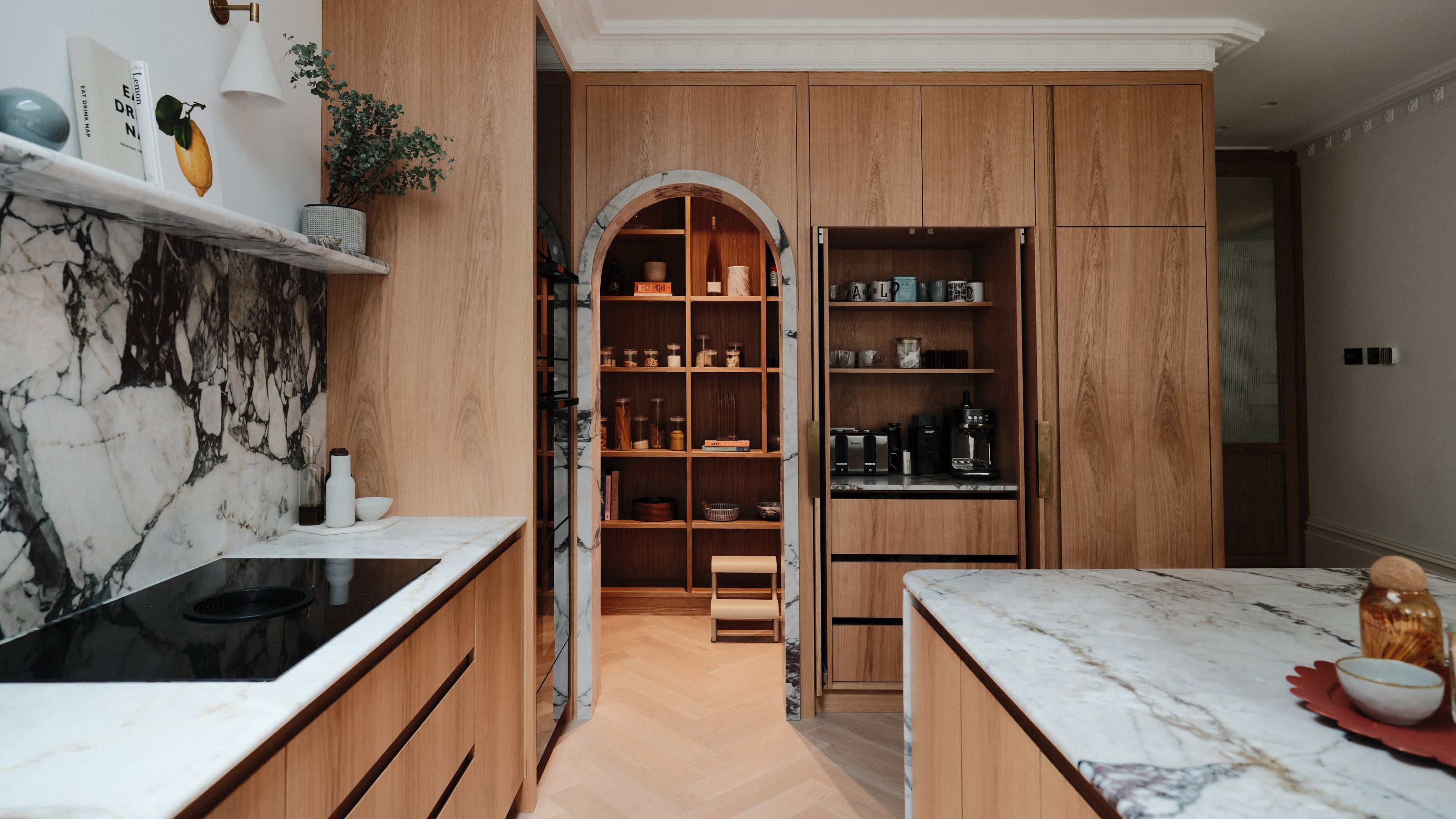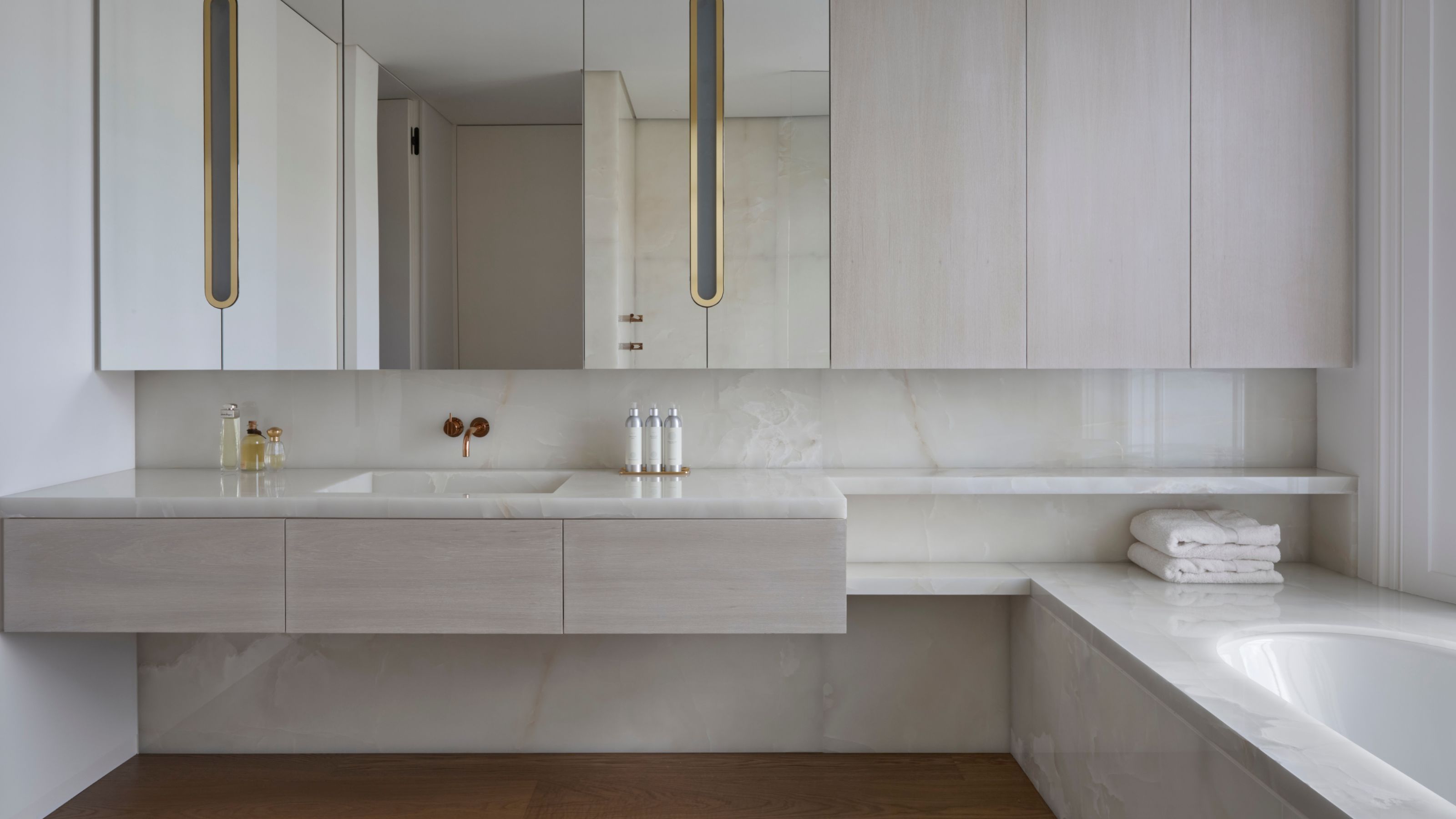How to Clean Terracotta Pots — Bring Beauty Back Into These Classy Planters With 7 Simple Steps
Expert advice on what you need to do to get your fine planters looking as good as new

How to clean terracotta pots may, or may not, be something that has crossed your mind. Yet like most home and garden maintenance, it's a worthwhile task if you want your plants to be healthy–and to create a sustainable outside space.
Terracotta pots are a stylish and classic choice for container gardening. The red clay, scorched earth tones flatter green foliage in a way that other materials just don't. They are extremely good value too. However, terracotta is porous, and salt deposits from plant fertilizers can start to show on the exterior over time. And like anything left outside, terracotta pots can get a little grubby and moldy too.
Even if you like a rustic style, cleaning your terracotta pots will prepare them for new spring plantings. We've asked a horticultural expert the best way to tackle this task to protect your pots and your plants.
What You'll Need

Preparation makes any task easier. So before you begin, prepare your space and gather the items you'll need. It's best to clean terracotta pots outside in your backyard. "When cleaning terracotta pots, choosing the right tools and materials is crucial to ensure thorough cleaning without damaging the pots or promoting the spread of contaminants like mildew," says Carina Ya, Lead Horticultural Specialist at Claywares. According to Carina, you'll need the following tools.
TOOLS:
• Waterproof gloves: It is advisable to wear gloves, especially when using vinegar or handling pots with mold or mildew, to protect your skin. We recommend these Chemical Resistant Latex Gloves from Amazon.
• Handheld scrubbing brush: Those with stiffer bristles are recommended for larger, outdoor pots — like this SetSail Scrub Brush priced at $8.99.
• Large bucket or container, like this Large Open Storage Bin from Target.
• Mild Dish Soap: A simple, mild dish soap is often sufficient for cleaning terracotta pots. It is gentle on the material and effective enough to clean without leaving harmful residues.
• Warm Water: Warm water is best for cleaning, as it speeds up chemical reactions and helps dissolve salts and organic matter more effectively. Warm water also enhances the efficacy of soaps and cleaning solutions. Carina adds, "If warm water is not available, cold water will suffice but might be less effective in breaking down stubborn residues."
How to Clean a Terracotta Pot

Whatever your terracotta planter styles, the best method of cleaning them will depend on what they're marked with. Gentle cleaning solutions are generally sufficient. Dirt and debris can be washed away with mild eco-friendly dish soap, while white mineral patches can be cleaned with a vinegar solution and black mildew or green algae marks removed with baking soda.
"When cleaning terracotta pots, the deposits typically found on their surfaces are usually salts from mineral deposits in water, or fungal growths, which can arise from unhealthy soil conditions in the pot," says Carina. "These can be tackled with various cleaning agents. For general cleaning without disease concerns, less harsh methods like vinegar or baking soda can be used to remove salt deposits or mold."
Here is everything you need to know about cleaning Terracotta Pots:
Step 1 - Remove Plants and Soil: Remove any plants and empty all the soil from the pot. "This is crucial for a thorough cleaning, especially if the previous plant had diseases," says the expert.
Step 2 - Dry Brushing: Use a brush to gently scrub the surface and interior of the pot to remove loose dirt and debris. "Be careful with pots that have intricate designs or embossed patterns, as vigorous scrubbing can damage them," cautions Carina.
Step 3 - Prepare Cleaning Solution: For a gentle cleaning solution, mix approximately 1 tablespoon of mild dish soap per gallon of warm water. This mild solution is effective for general cleaning without damaging the pot's surface. You can also opt to use vinegar or baking soda solution.
Step 4 - Soaking: Submerge the pot in the cleaning solution in a large container or bucket. The duration of the soak depends on the severity of the residue.
Light Deposits: 3-6 hours.
Moderate Deposits: About 12 hours.
Heavy Deposits: At least 24 hours
Step 5 - Scrubbing and Rinsing: After soaking, scrub the pot (the baking soda paste can also be used here if required). "Rinse the pot under running water to ensure all residues are removed," advises Carina.
Step 6 - Final Rinse and Disinfect: Soak the pot in clean water for about 2 hours to balance any pH changes from the previous soaking process.
After the soaking period, remove the pot from the clean water and pour boiling water over the pot to finalize the disinfection process.
Step 7 - Drying: Place the pot in a sunny spot or a well-ventilated area to dry completely. "The pot is fully dry when there is no dampness to the touch on both the interior and exterior surfaces," says Carina. "Ensure the pot is dry before replanting to prevent any issues associated with damp environments."
Should I Disinfect My Terracotta Pot?

It's only necessary to disinfect your terracotta pots when container gardening if previous plants grown in them had diseases. This will prevent the diseases spreading to any new plants being planted in your pots.
The vinegar solution is a natural and effective disinfectant, as is the final boiling water rinse. However, diluted bleach can also be used for heavy fungal marks and mildew, if necessary.
"Disinfection is crucial if a previous plant had a disease to prevent the transmission of pathogens to new plants," says Carina. "Mild dish soap and natural cleaners like vinegar are inexpensive yet effective disinfectants. A bleach solution is also effective for sterilizing pots. Ensure the pot is completely rinsed and dry before using it again."
If you need to use a harsher method, follow the steps above, and at step 3, soak the pots in this bleach solution instead of the dish soap.
Bleach Solution: For deep disinfection or to combat heavy mold and fungal growth, dilute one part bleach in nine parts water. "This strong solution should be used with care, particularly ensuring it does not remain on the pot as it can affect soil pH and plant health when reused," cautions Carina. "It's advisable to use gloves when handling bleach as it can irritate the skin and mucous membranes."
FAQs
What is the best cleaner for a terracotta pot?

For white salty mineral deposits, soaking terracotta pots in a diluted vinegar solution is best. For dust and dirt, mild dish soap works well. A baking soda paste can also be used to scrub away stubborn mildew and algae growth marks.
"Mild dish soap and natural cleaners like vinegar and baking soda are inexpensive yet effective," says Carina. "Using brushes over cloths is advantageous because cloths, if not thoroughly cleaned after each use, can harbor fungi and other pathogens, potentially leading to contamination. Brushes, on the other hand, are easier to clean and dry, which helps prevent the spread of fungi."
What are the natural cleaning agents I can use to clean terracotta?
There are a few methods you could use and these include:
Mild Dish Soap: A simple, mild dish soap is often sufficient for cleaning terracotta pots. It is gentle on the material and effective enough to clean without leaving harmful residues.
Vinegar Solution: For a more natural approach, especially if dealing with salt deposits or mildew, a solution of white vinegar and water (1 part vinegar to 4 parts water) can be used. "Vinegar is a natural disinfectant and works well on mineral deposits," adds Carina.
Baking Soda: As a mild abrasive, baking soda can be made into a paste and used to scrub away stubborn spots. "This is especially useful for organic stains and is non-toxic, making it safe for use around plants," advises Carina.
Be The First To Know
The Livingetc newsletters are your inside source for what’s shaping interiors now - and what’s next. Discover trend forecasts, smart style ideas, and curated shopping inspiration that brings design to life. Subscribe today and stay ahead of the curve.
Jacky Parker is a London-based freelance journalist and content creator, specialising in interiors, travel and food. From buying guides and real home case studies to shopping and news pages, she produces a wide range of features for national magazines and SEO content for websites
A long-time contributor to Livingetc, as a member of the team, she regularly reports on the latest trends, speaking to experts and discovering the latest tips. Jacky has also written for other publications such as Homes and Gardens, Ideal Home, Red, Grand Designs, Sunday Times Style and AD, Country Homes and Interiors and ELLE Decoration.
-
 5 Things You Should Never Buy From a Thrift Store, According to People Who Know About Antiques
5 Things You Should Never Buy From a Thrift Store, According to People Who Know About AntiquesIt may look like treasure, but it may also just be trash. Here is how to know what to avoid while thrifting, and what to look for instead
By Olivia Wolfe Published
-
 7 Pantry Organization Mistakes That Are an Organizer's Worst Nightmare
7 Pantry Organization Mistakes That Are an Organizer's Worst NightmareGet that Pinterest-perfect pantry by avoiding these certified organization faux pas
By Amiya Baratan Published
-
 How Much Does an Extension Cost in 2025? Renovation and Design Experts Break Down Your Budget
How Much Does an Extension Cost in 2025? Renovation and Design Experts Break Down Your BudgetExplore how much different types of extensions cost in 2025 to budget for your project accurately
By Amy Reeves Published
-
 9 Bathroom Storage Mistakes You're Probably Making That Make Using This Space Much Harder — And What to Do Instead
9 Bathroom Storage Mistakes You're Probably Making That Make Using This Space Much Harder — And What to Do InsteadDiscover which mistakes are to blame for your overcrowded and cluttered bathroom
By Seraphina Kyprios Published
-
 These 'Scenting Droplets' Might Be the Coolest (and Most Stylish) Way to Make Your Home Smell Amazing
These 'Scenting Droplets' Might Be the Coolest (and Most Stylish) Way to Make Your Home Smell AmazingIf you're looking to switch out your incense sticks for something more fun, then you should know about Ripple+'s incense droplets. Let me introduce you.
By Amiya Baratan Published
-
 The Japanese Principle of Iki (粋) Is All About 'Refined Elegance' — Here's How to Embrace It in Your Home
The Japanese Principle of Iki (粋) Is All About 'Refined Elegance' — Here's How to Embrace It in Your HomeIf your interior vibe is all about refined elegance and opulent minimalism, you need to know about the Japanese principle of 'Iki'. Here's how to bring it home.
By Amiya Baratan Published
-
 What Can I Choose Instead of Brass Taps? 4 Finishes That Are Emerging in 2025's Kitchens and Bathrooms
What Can I Choose Instead of Brass Taps? 4 Finishes That Are Emerging in 2025's Kitchens and BathroomsIf you want to try something a little different for your kitchen or bathroom finishes, these are the trending styles in taps beyond classic brass
By Seraphina Kyprios Published
-
 Kris Jenner’s 'All-Green' Glass Fridge Is My Organization Inspo of the Week — Here Are 5 Smart Storage Takeaways I'll Be Adopting
Kris Jenner’s 'All-Green' Glass Fridge Is My Organization Inspo of the Week — Here Are 5 Smart Storage Takeaways I'll Be AdoptingIf you're looking for fridgescaping inspiration, you might not think to look to Kris. But her all-green fridge says otherwise. Here are five tips we've learnt.
By Amiya Baratan Published
-
 8 Tranquil Water Garden Ideas That Look Beautiful and Train Your Ear Away From Noisy Outdoor Distractions
8 Tranquil Water Garden Ideas That Look Beautiful and Train Your Ear Away From Noisy Outdoor DistractionsIf you enjoy spending time outdoors and are looking for ways to elevate your backyard's ambiance, here are 88 water garden ideas that are sure to inspire.
By Amiya Baratan Published
-
 8 Ways to Make Your Home Smell Like Spring — The Tips, and Scents, That Feel Fresh on the Nose for the New Season
8 Ways to Make Your Home Smell Like Spring — The Tips, and Scents, That Feel Fresh on the Nose for the New SeasonDon't get caught lacking with wintery home fragrance now that spring has sprung
By Amiya Baratan Published